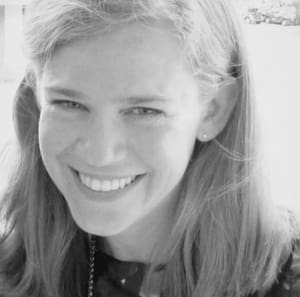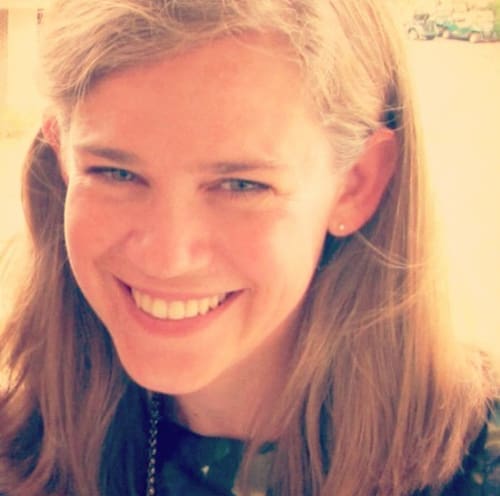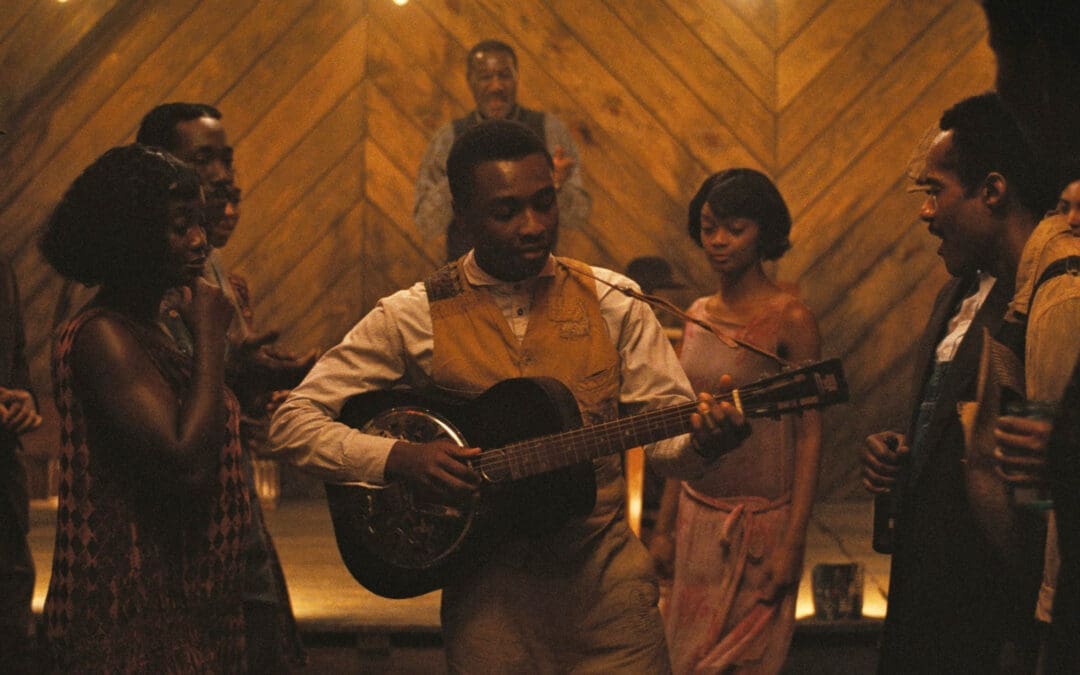The first house we looked at, nicknamed “the Taj Mahal” by local college students, faced campus. Rented by undergraduates for as long as anyone could remember, the sprawling white house was now for sale. We made an offer on it despite the bats and the broken plumbing, and I imagined boarding international students in the extra upstairs bedrooms. I imagined students stopping by to hang out on the front porch and play with my children, and I saw our family investing deeply in the lives of university students, our days beating to the rhythm of the campus calendar. But the Taj wasn’t meant for us: we were outbid.
We didn’t want to move outside of our tiny midwestern college town, but so few houses were on the market. Reluctantly we visited a couple places in a neighbouring town. On Jefferson Street we fell in love. The house fit our aesthetic perfectly. A hundred years old, hardwood floors, impeccable condition. The yard was small, but we would be next to a community garden and across the street from some of our best friends. The town’s economy was depressed, so the listing price was incredibly low. I felt I’d be the luckiest girl in the world to get to entertain in these spacious, beautiful rooms. I saw dinner parties downstairs and a writing studio upstairs, the beauty of the space seeping into my life, making it beautiful too. We offered more than the asking price. Even so, we were outbid. I cried like a teenager whose boyfriend just broke up with her.
The next house we bid on was in town. An old white farmhouse, it was smaller than we wanted, but it came on two lots of land. I could see my thumb growing greener, my days spent outdoors, growing hedges, orchards, and gardens, building a swingset and a fire pit and a tiny house in the back for guests. I could live with it. Our offer was accepted, and then the inspector called us. “This house was built to destroy itself,” he said. We rescinded.
From there, we found a small blue farmhouse, not unlike the white one, but we couldn’t work up enough excitement to make an offer. I sent letters to the owners of my dream house on Main Street—they spent most of the year in Florida, and I’d heard they would sell their Indiana home soon—but I got no reply. For a while we planned to make an offer on an old apartment building on the corner of Main and Washington—in what passed for “downtown” in our rural area. The historic (or at least historic-looking) brown brick building had four apartments. We plotted to turn the biggest one, downstairs, into a coffee shop, and to remodel the upstairs into one big loft apartment for our family’s living space. We could continue to rent the fourth apartment as a source of income. Liquidating our assets to be able to make the down payment, we were both serious about and infatuated with our plan. It would be our town’s one and only coffee shop, and with all the college students, it was destined to succeed. The first floor had lovely, sculpted walls, high ceilings, and a bay window. The back patio would be perfect for live music. I began collecting scone recipes and design ideas, delighted by the irony of “city living” in a loft apartment while residing in a tiny midwestern town.
And then we learned that property lines were drawn so that we wouldn’t be able to buy the small yard and parking spots behind the building. Besides, teaching at the university, raising two small children, remodeling an old building, acting as landlords, and starting a small business was possibly too much to fit on one couple’s plate. We never made the offer, and settled into our rental for another long winter.
In The Architecture of Happiness, Alain de Botton writes that a house can be a creator and a guardian of identity. Style, design, and decoration are not, as my formerly gnostic self would have claimed, frivolous subjects. Rather, the visible is as valuable as the invisible. Architecture is as important as philosophy. “Belief in the significance of architecture,” de Botton writes, “is premised on the notion that we are, for better or for worse, different people in different places—and on the conviction that it is architecture’s task to render vivid to us who we might really be.” As my husband and I continued searching for a house to buy, these words proved true: working up the resolve to make an offer on a house required the imaginative energy to see who I would be in that house. I saw my very identity shift before my eyes as I pictured life in each place. But it wasn’t only the physical architecture that shaped me; even my immaterial imaginings about each place, as it spoke to me about what kind of life would most appropriately unfold around it, altered my sense of self.
It was while pregnant with my firstborn that I became interested in houses and design for the first time. Before that, paint colours, furniture, rugs, window treatments, wall art, and houses themselves had barely registered in my mind. I always had my nose in a book and hardly noticed the physical things around me. Halfway through the pregnancy, though, I began to think incessantly about a nursery. I wanted the walls to be green—not minty green, not forest green, not kelly green, not olive green: a dusky, leafy green. I rescued fallen tree branches, strung them together with twine, and hand-sewed little stuffed birds to make a mobile. I appliqued an enormous piece of wall art—a tree, brown trunk, leaves green and pale pink and deep red, with a wide-eyed owl perched on a branch. My child’s name would be Rosemary, and she would be a dryad in a midwinter night’s dream, full of magic and nature and whimsy.
I’m not one of those women who loves being pregnant, or who feels a deep connection with the child still in the womb. My daughter felt more like an alien invading my body than anything else. What I realized as I prepared a place for her to eventually sleep was that I was using interior decoration as a way to connect with the girl I couldn’t see or touch. Making her room ready helped me to connect with my daughter in a way that nothing else had. The seen allowed me to connect with the unseen. My imagination changed me.
Though much of what I read in The Architecture of Happiness resonated with my experiences of househunting and pregnancy, I wondered about the spiritual implications of the ideas. There are some things de Botton says that—despite their elegant phrasing—seem odd. Why would access to an authentic self be “determined by the places we happen to be in, by the color of the bricks, the height of the ceilings and the layout of the streets?” What would that mean for my friends in government housing, in boxy white-walled apartments with musty brown carpet? What would it mean for the children in India growing up in landfills? What would it mean, even, for my friends comfortably ensconced in cookie cutter homes in the suburbs? What would it mean for me? If we bought the wrong house, would I live cut off from my authentic self?
I began to wonder if all this talk of architecture and happiness was just a parlour-game for the well-off and the over-educated, an idle conversation for those western individualists residing at the top of Maslow’s pyramid. Maybe I only resonated with the ideas because I was looking for a way to justify spending time and money on a beautiful house, something that always made me feel vaguely guilty. After all, hadn’t Jesus called his followers to leave their houses?
According to de Botton, it is the world’s great religions that have shown the most sympathy to the human need for a home. Houses of worship, traditionally beautiful buildings designed to inspire humans to God and to goodness, also become homes: places where individuals meet together and transform into a family. Churches have long been the most likely to care for the literally homeless in communities; they have also been places where the spiritually or emotionally restless can find rest. Communities are regularly strengthened by this religious sensitivity to the human need for a home.
Yet the greatest religious figure of the last two thousand years was homeless. “Foxes have holes,” Jesus said, “Birds have nests. But the Son of Man has no place to lay his head.” As a child, Jesus spent three days talking with priests in the temple; when his parents finally found him, he simply asked, “Why were you searching for me? Didn’t you know that I had to be in my father’s house?”
Maybe this is the truth that de Botton—a secular humanist and an atheist—is missing, and maybe it’s the way to reconcile the importance of home with Jesus’s admonishment against storing up our treasures on earth. De Botton is absolutely right that architecture shapes us, that our imagination about architecture shapes us, and that beautiful buildings (whether or not we possess them) can bring happiness by embodying our ideals. But what he doesn’t understand is that one structure takes precedence above all others in our lives: the temple of the Lord. The temple of the Lord is humanity’s true home and the place where we can be most fully ourselves. The temple was Jesus’s home on earth, and after his death, his followers composed the new temple. “Don’t you all know,” Paul wrote to the early Christians, “that you all are his temple, and God’s spirit dwells in your midst?” Jesus himself is the cornerstone of that temple, Peter added, and you are living stones, being built into a spiritual house, a place to offer up sacrifices to God.
Even metaphorical structures have the power to change us and our world in very real and tangible ways. Though our true home is a spiritual one, we can’t disengage from life on earth, treating the material world as unimportant. Rather, the realities about our spiritual home—about the kingdom of God—are what infuse our work in the world with meaning. When we do the work we’ve been given, and do it well, our actions testify to the truth that God called his creation good, as well as the truth that the world is broken because of sin, and God is making all things new.
Though our truest home is the temple of the lord, the places we call home on earth are not unimportant. Our homes can mirror the beauty of the kingdom—even when they don’t match our aesthetic dreams. My friends in government housing put original artwork on their walls and bake funfetti cupcakes for their neighbours, creating a sense of community in a place where people can feel forsaken. My small-town companions have spent a decade restoring a tumbledown farmhouse, proving that anything can be redeemed. My friends in the suburbs fold laundry and compose sonnets and love each others’ children, doing the work they’ve been given, and doing it well. Together we are redeeming what was lost, mending what was broken, healing what was hurt, ordering what was chaotic. We are pursuing and creating the beauty that points to the kingdom. Regardless of where we live, we are building something new with our lives and through our imaginations, a kingdom that will have no end, a home for all our homeless, wandering hearts.
The house was unlisted. My friend Megan told me that she had talked with Gary, the town barber who lived across the street from the house, and that he said the owners were ready to sell. It was five bedrooms on three acres just barely outside of town. We steeled our hearts and screwed up our courage and knocked on the house’s door.
“To describe a building as beautiful,” de Botton writes, “suggests more than a mere aesthetic fondness; it implies an attraction to the particular way of life this structure is promoting.” I hated to admit it, but—I couldn’t call the house beautiful. It certainly wasn’t a manifestation of my ideas about the good life. It was ranch-style, not bungalow; new, not old; formulaic, not whimsical. Aesthetically, it was a forgettable house.
But I imagined a good life in this house. I imagined resting in a hammock swing on the back porch while my children played below. I saw early mornings in the office, writing in the quiet. I added apple trees to the land, and chickens and bees—we could share the extra produce and eggs with our neighbours. I envisioned parties around a fire pit and events for college students in the spacious finished basement; with this space, we could invest in the lives of undergraduates and build community.
We bought the house. We’ll make our changes with paint and hammers, try to shape the house to match our dreams, and doubtless the house will shape us in return. It will invite us to become specific kinds of people, the kind who live in this house; it will become a guardian of our family identity. “Belief in the significance of architecture,” you’ll remember that de Botton said, “is premised on the notion that we are, for better or for worse, different people in different places—and on the conviction that it is architecture’s task to render vivid to us who we might really be.” When I think back on lives I imagined for myself as we house-hunted, I tend to agree: I would have been a different person in any of those various houses than I will be in this one. What will living in this house, on these three acres, show me about who I really am?
At the same time, I don’t worry too much that our new home doesn’t match my aesthetic exactly—that it’s not my dream house or the incarnation of all my ideas about the good life. Doubtless the architecture of my home will affect me, but not in any determinative way. And, as de Botton himself admitted, “Endeavoring to purchase something we think beautiful may in fact be the most unimaginative way of dealing with the longing it excites in us. . . . What we seek, at the deepest level, is inwardly to resemble, rather than physically to possess, the objects and places that touch us through their beauty.” I’ve found beauty in the world, and been inwardly changed by it. I’ve found another home, one being built by a homeless man and his ragtag group of hangers-on, one that is making me a different person. And there’s only one thing I’m seeking—not to possess it, but simply to dwell in that lovely house all the days of my life.


